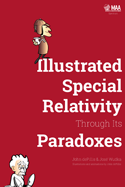A Fusion of Linear Algebra, Graphics, and Reality
by John dePillis and José Wudka
Illustrated Special Relativity illustrates and resolves several apparent paradoxes of special relativity including the twin paradox and train-and-tunnel paradox. Assuming a minimum of technical prerequisites the authors introduce inertial frames and use them to explain a variety of phenomena: the nature of simultaneity, the proper way to add velocities, and why faster-than-light travel is impossible. Most of these explanations are contained in the resolution of apparent paradoxes, including some lesser-known ones: the pea-shooter paradox, the bug-and-rivet paradox, and the accommodating universe paradox. The explanation of time and length contraction is especially clear and illuminating.
At the outset of his seminal paper on special relativity, Einstein acknowledges the work of James Clerk Maxwell whose four equations unified the theories of electricity, optics, and magnetism. For this reason, the authors develop Maxwell’s equations which lead to a simple calculation for the frame-independent speed of electromagnetic waves in a vacuum. (Maxwell did not realize that light was a special case of electromagnetic waves.) Several chapters are devoted to experiments of Roemer, Fizeau, and de Sitter to measure the speed of light and the Michelson-Morley experiment abolishing the aether.
Throughout the exposition is thorough, but not overly technical, and often illustrated by cartoons. The volume might be suitable for a one-semester general-education introduction to special relativity. It is especially well-suited to self-study by interested laypersons or use as a supplement to a more traditional text.
Purchase your copy today in the MAA eBooks Store.


No comments:
Post a Comment